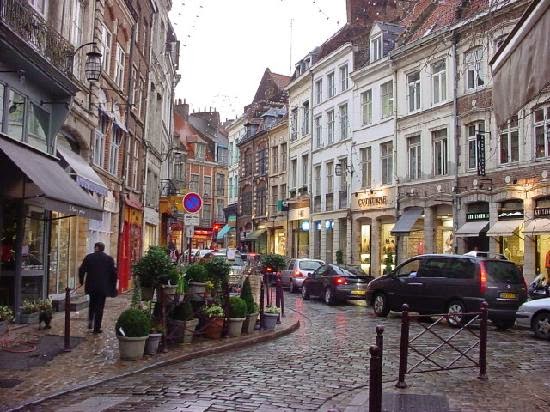Here are some details about the city of Lille, France.
The city of Lille, to which the previously independent town of Lomme was
annexed on 27 February 2000, has a population of 226,827 according to the 2009 census. (For comparison, Des Moines has a population of 207,510.)
However, Metropolitan Lille, which also includes Roubaix, Tourcoing and numerous suburban communities, has a population of 1,091,438.
However, Metropolitan Lille, which also includes Roubaix, Tourcoing and numerous suburban communities, has a population of 1,091,438.
The Eurometropolis of Lille-Kortrijk-Tournai, which also includes the Belgian cities of Kortrijk, Tournai and Mouscron, has 2,155,161 residents. It is the fifth-largest urban area in France after Paris, Lyon, Marseille, and Toulouse.
Fun facts (according to the internet):
- Lille is one of the friendliest cities in France.
- Lille (often written L’Île [“the island”] until the 18th century) began as a village between arms of the Deûle River.
- Count Baldwin IV of Flanders fortified it in the 11th century. The medieval town was destroyed or changed hands several times.
- Louis XIV besieged and claimed it in 1667.
- After being captured by the duke of Marlborough in 1708, it was finally ceded to France in 1713 by the Treaty of Utrecht.
- Lille owes its name – once spelled L’Isle – to the fact that it was founded, back in the 11th century, on an island in the River Deûle.
- Lille was first mentioned in 1066 as part of the estates of the powerful Counts of Flanders.
- Lille was damaged and also occupied by the Germans during World Wars I and II.
- Lille is one of France’s top student cities, with over 110,000 students.
- Lille hosts Europe's largest flea market, the two-day Braderie (French for “sell at a low price”) de Lille, in September each year.
More details and firsthand pictures when we are in Lille!








No comments:
Post a Comment